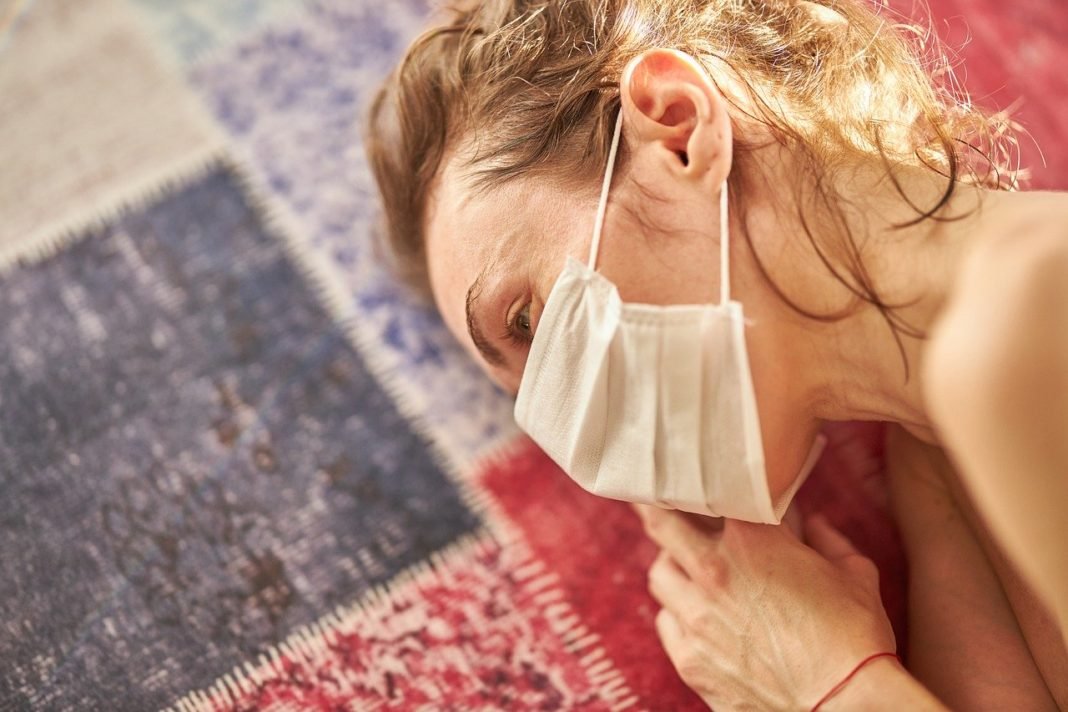The prime aim of the present study was to assess the level of perceived stress and job satisfaction among public and private hospital nurses. The study was conducted on a purposive sample of 100 nurses (50 from public hospital and remaining 50 from private hospital) drawn from COVID-19 hotspot cities of Bihar such as Siwan, Saran and Gopalganj. General Health Questionnaire (GHQ-12) developed by David Goldberg (1978) was applied for screening purpose. Perceived Stress Scale (PSS) developed by Cohen, Kamarck & Mermelstein (1983) was employed to assess the level of perceived stress of nursing staff of public and private hospitals. Job Satisfaction Survey (JSS) developed by Paul E. Spector (1985) was administered to measure the level of job satisfaction among nursing staff of public and private hospitals. Analyses of the data revealed that nursing staff from public hospitals perceived more stress in comparison to private hospital nursing staff. Results also revealed that public hospitals nursing staff experienced more job satisfaction than private hospital nursing staff.
Stress is an integral ingredient of modern lifestyle. It pervades in every spheres of life. Therefore, WHO described stress as a “worldwide epidemic” (World Health Organization, 2000). It is an internal state which is caused by physical demands of the body or by environmental and social situations which are assessed as potentially harmful, uncontrollable or exceeding our resources for coping. Stress can be described as a dynamic and reciprocal relationship between the person and the environment. Selye defined stress as “response state of organism to force acting simultaneously on body which, if excessive, i.e., straining the capacity of adaptive processes beyond their limits, led to diseases of exhaustion and death” (Selye,1976). Socio-economic factors, occupational burden, excessive workload, emotional disturbances, etc., have compelled to bear the burden of modern lifestyle which resulted in intolerable level of stress. Stress may operate alone or combine in groups and demonstrate their repercussions at different stages of life (Croucher et al., 1997)
In the prevailing situation due to the unprecedented outbreak of COVID-19 pandemic and subsequent lockdown almost all sections of society are compel to live and work under constant threat of deadly corona virus infection. In such circumstances, obviously the risk and responsibilities of the professionals have increased tremendously. Of all the professional groups of health sector in general and nursing staffs in particular are bound to live under constant stress for 24X7 to combat the spread of the deadly corona virus. Nursing staffs contribute very vital service in health care sector. Helping sick people and dealing with medical emergencies and facing considerable amount of health hazards from infectious diseases to radiation therapy, are very stressful. This profession involves working with people who are themselves suffering from a higher degree of stress. Nursing is an occupation with a constellation of circumstances leading to stress. Selye remarked that nursing is one of the most stressful professions. Nursing staffs in India are overburdened as the nurse- to –patient ratio is very low that is 1:2250. They have to render multifarious dimensions of responsibilities from treatment to recovery of patients whether suffering from chronic or acute diseases or to tackle emergency situation arising due to COVID-19 pandemic.
Job satisfaction is a complex variable and is influenced by situational factors of the job as well as by the dispositional characteristics of the individual (Sharma and Sharma, 1978). The term ‘Job Satisfaction’ lacks adequate definition as well as a satisfactory theory about its meaning.
The term Job satisfaction is difficult to define because the concept of job satisfaction is highly subjective. It varies from person to person. Lock (1976) provides a comprehensive definition of job satisfaction as involving cognitive, affective and evaluative reactions or attitudes and states that it is “a pleasurable or positive emotional state resulting from the appraisal of one’s job or job experience”. It results from the perception that one’s job fulfils or allows the fulfilment of one’s important job values and to the degree that these values are congruent with one’s needs. Employee’s satisfaction is affected by several aspects of the job, including pay, promotion, supervision, fringe benefits, contingent rewards, working conditions etc. Job satisfaction, therefore determined jointly by job characteristics as well as employee characteristics.
M.E. Ernst et al. (2004) found a very close relationship between stress and job satisfaction in a paediatric setting. After successful delivery of new born a sense of recognition and satisfaction reflected from the face of nursing staffs.
T. Jahan and U.V. Kiran (2013) reported that a better job satisfaction among nurses of government hospitals in comparison to nurses belonging to private hospitals.
MATERIALS AND METHODS
Objectives:
The main objective of the present study was to assess the level of perceived stress and job satisfaction among public and private hospital nurses.
Hypotheses:
- There will be significant difference in the level of perceived stress among public and private hospitals nursing staffs.
- There will be significant difference in total job satisfaction among public hospital nursing staffs and private hospitals nursing staffs.
Participants:
The sample consisted of 50 public hospitals and 50 private hospitals nursing staff. The participants were selected from different public and private hospitals of Siwan, Saran and Gopalganj. These districts were declared COVID-19 hotspots during March-April, 2020.
Materials:
In addition to General Health Questionnaire (GHQ-12) for screening purpose, the following tools were also employed to obtain the data
- Perceived Stress Scale (PSS): Perceived Stress Scale developed by Cohen, S; Kamarck T; and Mermelstein R (1983) was applied to assess the level of stress. The scale consists of 10-items. It is the shortened version of its original 14- item index. The PSS has been widely used for measuring nonspecific perceived stress. The scale predicts both objective biological markers of stress and increased risk for diseases among the persons with higher perceived stress levels. Roberti et al., (2006) reported reliability estimate of 0.85 and 0.82.
- Job Satisfaction Survey (JSS): The JSS is developed by Paul E. Spector (1985).The JSS is a questionnaire used to evaluate nine dimensions of job satisfaction related to overall satisfaction. In order to take the test, the participants are asked to respond to 36 items or 4 items for each of the nine sub-scales. For each item, there is choice between “strongly disagree” to “strongly agree” six choice in all with which the participants must respond. The internal consistency of the scale is 0.60 to 0. 91.
Data Collection:
Data were collected with the help of emailing the PDF of the above-mentioned scale and questionnaire. Since, it was not possible to meet personally with the participants during Covid-19 lockdown. It was clearly directed from the government authority to maintain social distancing.
Scoring:
The obtained data were analyzed with the help of appropriate statistical measures. Mean and standard deviation were calculated for all the variables. For testing the significance of difference between two means, t ratio was calculated.
RESULTS AND DISCUSSION
| Groups | N | Mean | S.D | t-ratio | df | p-value |
| Nursing staff of public hospitals | 50 | 22.2 | 5.05 | 2.17 | 98 | P <.05 |
| Nursing staff of private hospitals | 50 | 20.2 | 2.97 |
*Significant at .05
It is obvious from the perusal of data noted in Table -1 that there is significant difference between the nursing staff of public hospitals and private hospitals in relation to perceived stress (t = 2.17, p < .05). Obtained t-ratio was significant at 0.05. It implies that nursing staff of public hospitals perceived more stress than private hospitals. Therefore, null hypothesis is rejected and alternative hypothesis is accepted that there will be significant difference in perceived stress between the nursing staff of public hospitals and private hospitals.
| Public Hospital Nursing Staff | Private Hospital Nursing Staff | ||||||
| Dimensions | Mean | S.D | Mean | S.D | t-ratio | df | p-value |
| Pay | 16.7 | 3.16 | 14.6 | 2.27 | 3.44 | 98 | p<.001 |
| Promotion | 15.1 | 2.36 | 14.7 | 2.30 | 0.88 | 98 | NS |
| Supervision | 16.2 | 2.01 | 15.7 | 3.10 | 2.21 | 98 | p<.05 |
| Fringe benefits | 16.3 | 2.14 | 14.6 | 2.27 | 3.40 | 98 | p<.001 |
| Contingent rewards | 15.7 | 1.54 | 15.0 | 1.42 | 2.67 | 98 | p<.05 |
| Operating conditions | 13.8 | 1.67 | 13.6 | 1.85 | 0.29 | 98 | NS |
| Co-workers | 14.5 | 1.86 | 14.1 | 1.59 | 1.47 | 98 | NS |
| Nature of work | 15.3 | 1.71 | 14.4 | 1.81 | 2.06 | 98 | p<.05 |
| Communication | 14.1 | 1.42 | 13.8 | 1.50 | 0.33 | 98 | NS |
*Significant at 0.05 **Significant at 0.01 ***Significant at 0.001 NS: Not Significant
Table -2 shows mean, standard deviation and t-ratio of all the nine dimensions of JSS. The table further shows that t-ratio on sub-scale pay was 3.44 and it was significant at .001. The table further demonstrate that t-ratio on sub-scale –pay, supervision, fringe benefits, contingent rewards and nature of work significantly different while t-ratio on promotion, operating conditions, co-workers, and communication were not significantly different. Data shows scores on five subscales like pay, supervision, fringe benefits, contingent reward and nature of work were better for public hospitals nursing staff. I n other words, there were no significant difference between public hospitals nursing staff and private hospitals nursing staff when it deals with the subscales of promotion, operating conditions, co-workers and communication.
| Group | N | Mean | SD | t-ratio | df | p-value |
| Nursing staff of public hospitals | 50 | 16.2 | 1.76 | 3.41 | 98 | P < .001 |
| Nursing staff of private hospitals | 50 | 14.8 | 1.82 |
***Significant at .001
Table – 3 shows that there is significant difference between nursing staff of public hospitals and private hospitals in relation to total job satisfaction (t=3.41, p < .001). It can be say that nursing staff of public hospitals experiences greater total job satisfaction than nursing staff of private hospitals. Therefore, the null hypothesis is rejected and alternative hypothesis is accepted
CONCLUSIONS
Having discussed the obtained results in detail the following conclusions have been derived:
- Nursing staff of public hospitals perceived more stress than nursing staff of private hospitals.
- Nursing staff of public hospitals enjoyed more total job satisfaction than nursing staff of private hospitals.
- There was no significant difference between the score obtained by public hospitals nursing staff and private hospitals nursing staff on four subscales of JSS. Those four subscales were promotion, operating conditions, co-workers, and communication.
- Mean scores on five subscales of JSS showed greater satisfaction among public hospitals nursing staff. These subscales were pay, supervision, fringe benefits, contingent rewards, and nature of work.
- Public hospitals nursing staff perceived more stress which resulted in poor health and inadequate care provided to the patients.
REFERENCES
- Croucher R, Marcenes W.S, Torres M.C, Hughes F, Sheiham A.(1997) The relationship between life-events and periodontitis. A case control study. J Clin Periodontol; 24:39-43
- Ernst M.E, Franco M, Messmer P.R and Gonzalez J.L (2004) Nurses, Job satisfaction , Stress and Recognition in a Paediatric Setting, Vol. 30, No.3, pp. 219-227.
- Jahan T and Kiran U.V(2013), An evaluation of Job Satisfaction of Nurses across working sector, International Journal of Humanities and Social Science Invention, Vol. 2,Issue 6, 2013,pp- 37-39.
- Khan I (2011) Theories and Practices of Organizational Behavior, pp. 46-48.
- Lock, E.A (1976) The nature and causes of job satisfaction. The handbook of Industrial and Organizational Psychology, pp-1297 -1343,.Chicago,
- Roberti J.W (2006), Further Psychometric Support for 10-item version of the Perceived Stress Scale, Journal of College Counseling, September, 2006.
- Selye H. (1976). Stress in Health and Diseases Chicogo: Butterworths, 1973
- Sharma S and Sharma, S.K (1978) Inter relationship among measures of job involvement, job satisfaction and general anxiety, Asian Journal of Psychology and Education, 3, pp 35-39.
- Spector P.E (1985) Measurement of human service staff satisfaction: Development of the job satisfaction survey, American Journal of Community Psychology. 13, 693-713.
- World Health Organization (2000):http.www.mentalhealth.org.
























